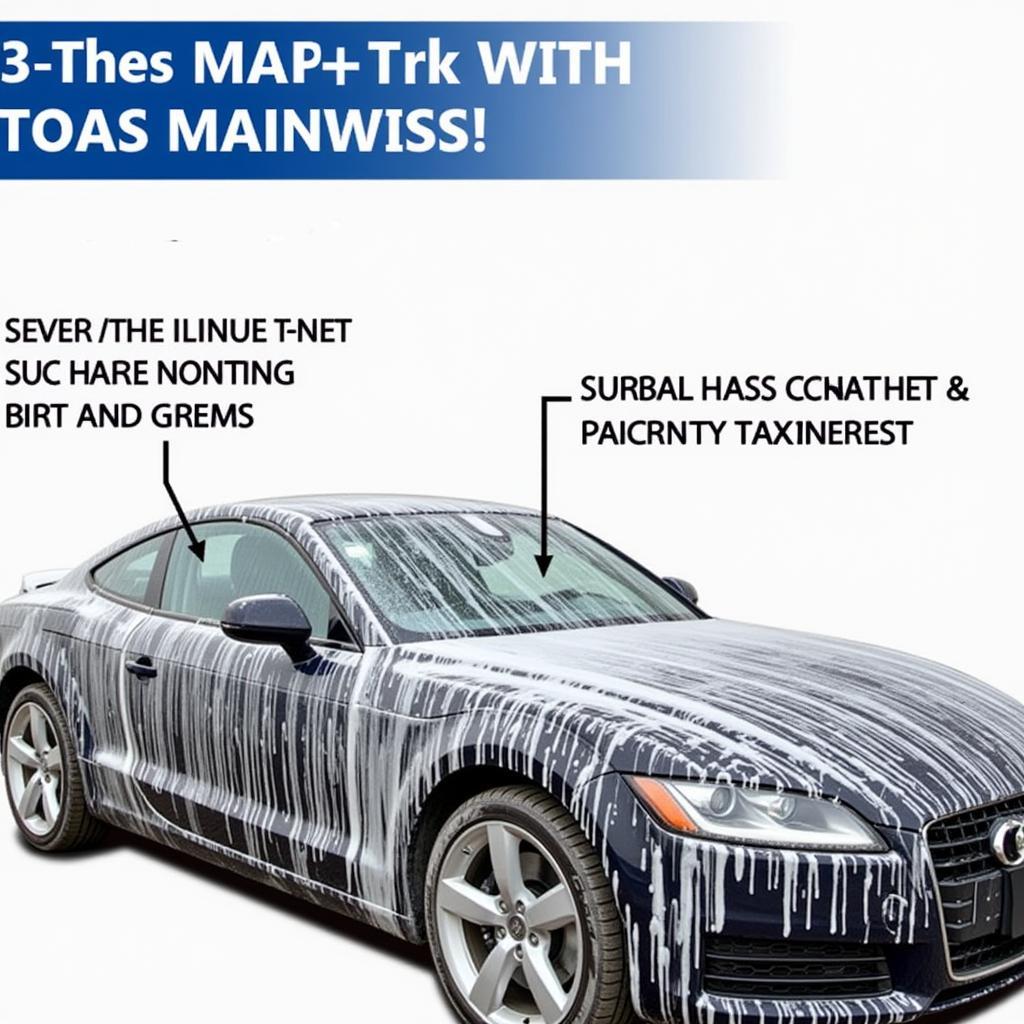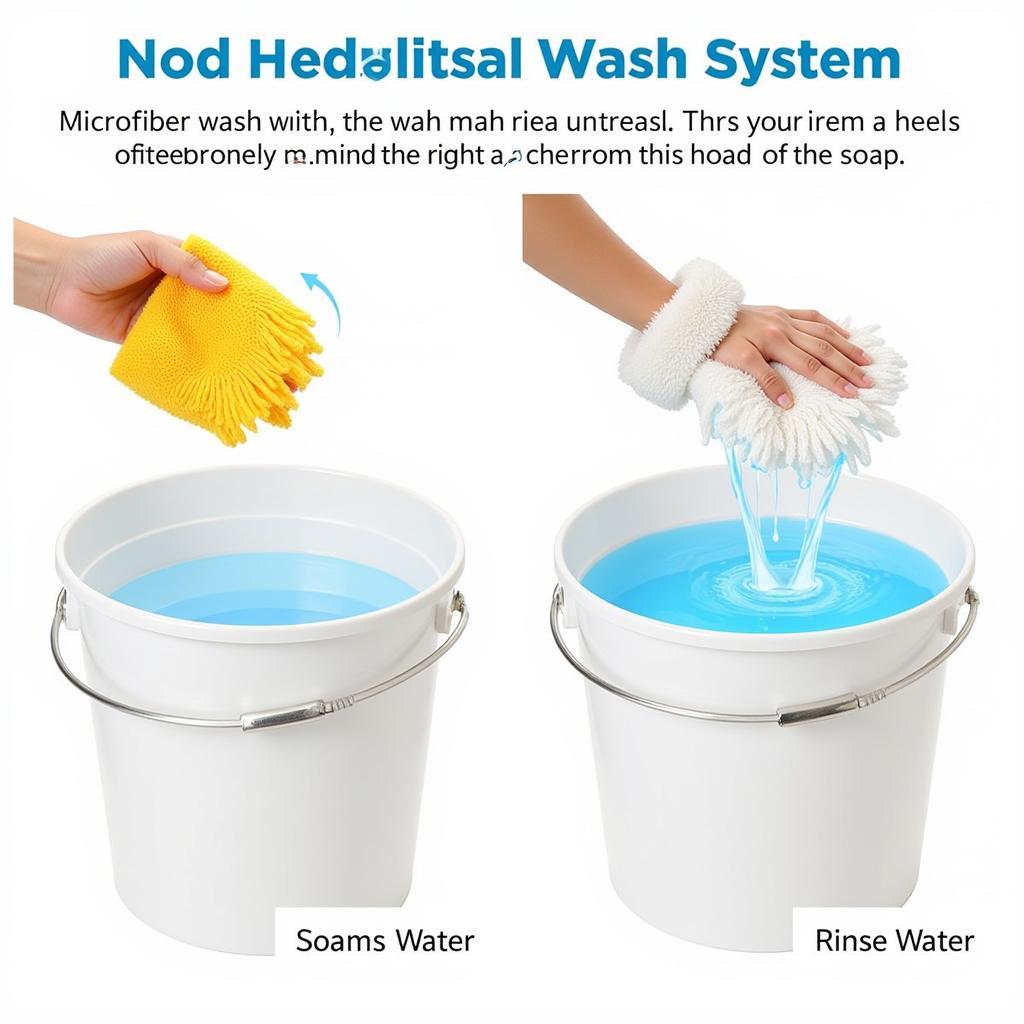Achieving a showroom-worthy shine isn’t magic; it’s knowing How To Properly Detail A Car Exterior. This comprehensive guide will walk you through the process, transforming your car from dull and dusty to gleaming and protected.
Understanding how to properly detail a car exterior involves more than just a quick wash. It’s a meticulous process that cleans, corrects, and protects your car’s paintwork, leaving it looking its absolute best. From pre-wash to final sealant, we’ll cover every step, providing professional tips and tricks to help you achieve a flawless finish.
The Essential Pre-Wash Stage
Before you even think about touching your car with a wash mitt, the pre-wash is crucial. This step removes loose dirt, grime, and contaminants that can scratch your paint during the wash process. Use a quality snow foam or pre-wash solution to loosen and lift these particles, minimizing the risk of swirl marks. Rinse thoroughly with a pressure washer or strong hose stream.
Why Pre-Washing Matters
Pre-washing significantly reduces the risk of scratching your car’s paint. Imagine rubbing sand and grit directly onto your car’s surface – that’s what happens without a pre-wash. By removing these abrasive particles first, you ensure a safer and more effective wash.
 Applying Pre-Wash Foam to Car Exterior
Applying Pre-Wash Foam to Car Exterior
The Two-Bucket Wash Method
The two-bucket wash method is the gold standard for minimizing swirl marks and achieving a pristine finish. One bucket contains your wash solution, while the other contains clean water for rinsing your wash mitt. This prevents transferring dirt back onto your car’s paint, ensuring a scratch-free wash. Use a pH-neutral car wash soap and a high-quality microfiber wash mitt.
Choosing the Right Soap
Using the correct car wash soap is vital for maintaining your car’s paint. Avoid household detergents, which can strip away protective waxes and sealants. Opt for a dedicated car wash soap that is pH-neutral and specifically formulated for automotive paint.
 Demonstrating the Two-Bucket Wash Method
Demonstrating the Two-Bucket Wash Method
Decontamination: Clay Bar Treatment
Even after washing, microscopic contaminants can remain bonded to your car’s paint. A clay bar treatment removes these embedded particles, leaving the surface incredibly smooth and ready for polishing. Lubricate the surface with a clay bar lubricant and gently glide the clay bar across the paint.
The Importance of Decontamination
Decontamination is a key step in how to properly detail a car exterior. By removing embedded contaminants, you create the perfect foundation for polishing and sealant application, ensuring a truly flawless and long-lasting shine. Similar to how to detail your black car, this process is crucial for all car colors.
Polishing: Correcting Imperfections
Polishing is an optional step but highly recommended for removing minor scratches and swirl marks, restoring the paint’s clarity and gloss. Use a dual-action polisher with a suitable polishing pad and compound. Work in small sections, applying even pressure. This process can be complex, so beginners might want to consult a professional or practice on a less visible area first.
Achieving the Perfect Shine
Polishing can significantly enhance your car’s appearance. It’s the key to achieving that deep, mirror-like finish that truly sets a professionally detailed car apart. For black cars, polishing is especially important, as outlined in our guide on how to detail black car professional.
Protection: Applying Sealant or Wax
The final step in how to properly detail a car exterior is applying a protective layer of sealant or wax. This creates a barrier against UV rays, environmental contaminants, and water spots, preserving your hard work and keeping your car looking its best for longer. Apply the sealant or wax in thin, even coats, following the manufacturer’s instructions.
Choosing the Right Protection
Selecting the correct sealant or wax depends on your desired level of protection and the finish you want to achieve. Sealants generally offer longer-lasting protection, while waxes provide a warmer, deeper gloss. Learning what’s a car detailer do can give you further insights into these choices.
Conclusion
Knowing how to properly detail a car exterior is a rewarding skill. By following these steps, you can transform your car’s appearance and protect its paintwork for years to come. Remember, detailing is about more than just cleaning; it’s about restoring and preserving your car’s beauty. Considering the cost of professional detailing, learning how to do it yourself can be a valuable investment. For those wondering how much is interior car detailing cost, exploring our website can provide valuable information. And if you’re looking for professional help, check out our resources on where to have a car detailed.
FAQ
- How often should I detail my car’s exterior? Ideally, every 3-6 months.
- What’s the difference between a sealant and a wax? Sealants typically last longer, while waxes provide a deeper shine.
- Do I need a pressure washer for detailing? It’s helpful but not essential. A strong hose can also work.
- Can I detail my car in direct sunlight? No, it’s best to work in the shade.
- What type of microfiber cloth should I use? Use high-quality, plush microfiber cloths designed specifically for car detailing.
- Is polishing necessary for every car? No, it’s optional but recommended for correcting imperfections.
- Can I use dish soap to wash my car? No, it can strip away protective waxes and damage your paint.
Need expert advice? Contact us via WhatsApp: +1(641)206-8880 or Email: [email protected]. Our 24/7 customer service team is ready to assist.

Leave a Reply